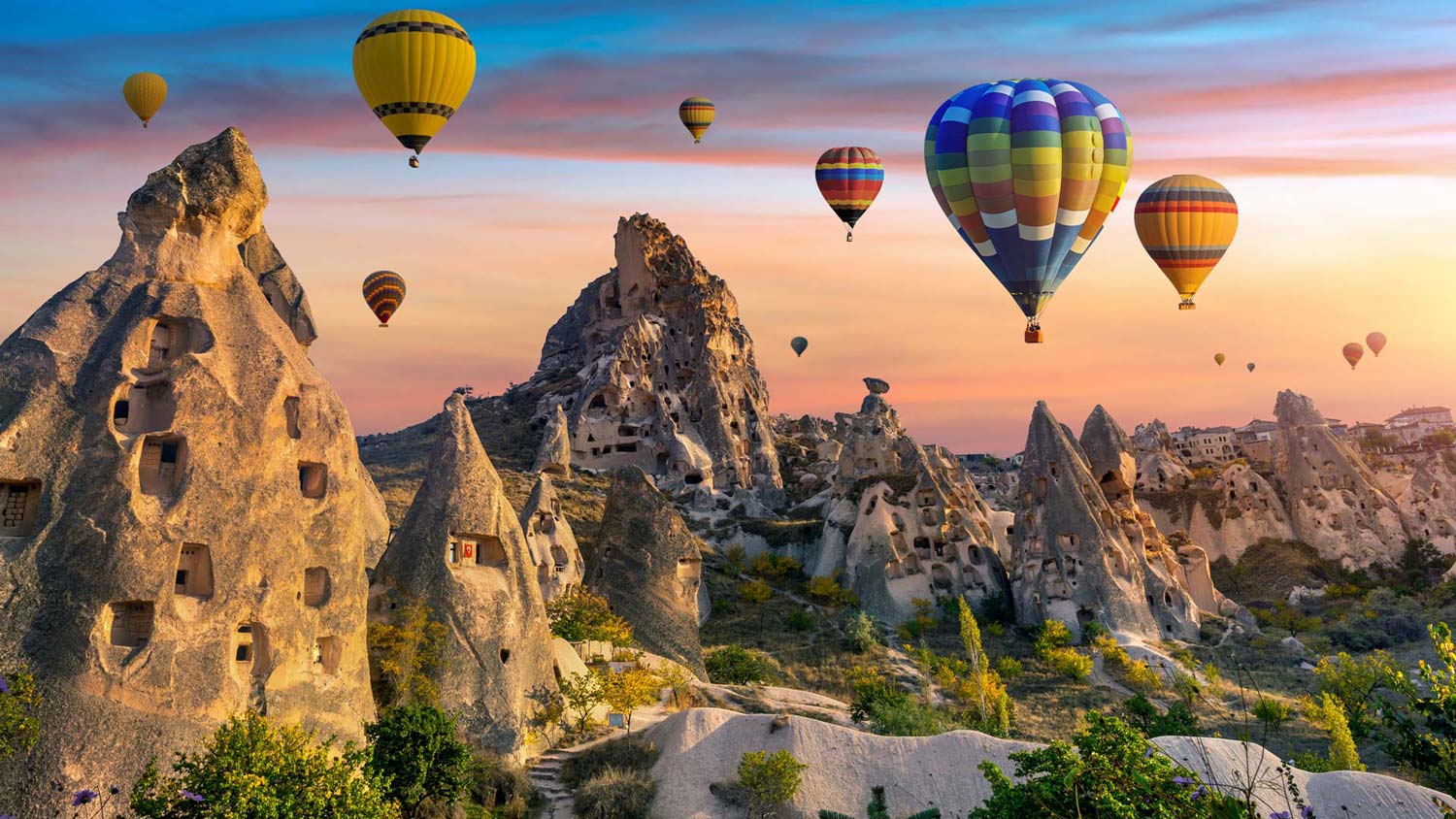Cappadocia
Cappadocia is a region of exceptional natural wonders, in particular characterized by fairy chimneys and a unique historical and cultural heritage.
Cappadocia, at the heart of the Central Anatolia Plateau in Turkey, is famous for its unusual volcanic landscape and rock dwellings. The formation of this landscape dates back to the late Miocene epoch ( ~ 10 Ma) (Ma = Million years) when ignimbrites and pyroclastic deposits started to spread out from a few volcanic centres over an area of 20.000 km2 centred on the plateau. The volcanism continued for several millions of years and laid down thick and colourful ignimbrite layers. The evolution of the Cappadocian landscape is governed by the uplift of the plateau since late Miocene times. Gently sloping plateaus formed by the surface of volcanic pyroclastic flows are later dissected, usually along fractures of soft-unwelded ignimbrites, to form mushroom-like, cone-shaped structures known locally as “fairy chimneys”. Ancient populations also used the ignimbrites to carve their houses, churches and even underground cities. This unique cultural and morphological heritage site was included in the UNESCO World Heritage List in 1985 and today is one of the most visited regions of Turkey.

Cappadocia was known as Hatti in the late Bronze Age, and was the homeland of the Hittite power centred at Hattusa. After the fall of the Hittite Empire, Cappadocia was ruled by a sort of feudal aristocracy, dwelling in strong castles and keeping the peasants in a servile condition. It was included in the third Persian satrapy, but continued to be governed by rulers of its own. After bringing the Persian Empire to an end, Alexander the Great tried to rule the area through one of his military commanders. Around 60 BC, Cappadocia became a Roman province.
Cappadocia contains several underground cities, largely used by early Christians as hiding places before Christianity became an accepted religion. People of the villages at the heart of the region also carved out houses, churches and monasteries from the soft rocks of volcanic deposits. The region became a monastic centre in 300–1200 AD. The Goreme Open Air Museum, which is along the path of Salomon Cappadocia Ultra Trail, is the most visited site of the monastic communities in Cappadocia and is one of the most famous sites in central Turkey. The complex contains more than 30 carved-from-rock churches and chapels, some having superb frescoes inside, dating from the 9th century to the 11th century.

